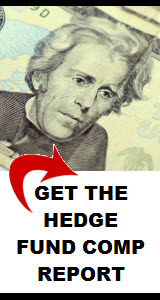Last time we looked at what arbitrage is: profiting from small prices differences in securities or between markets. Today we’ll look at some of the more common ways hedge fund managers use arbitrage to make profitable trades in hedge fund jobs.
Arbitrageurs use leverage, short-selling, derivatives and synthetic securities (matching one asset with a combination of others with similar profit and loss profiles) to attempt to take advantage of discrepancies among prices. Some of the markets in which they use these tools include:
Capital structure arbitrage
The capital structure of a company is how it is financed. This is usually a combination of equity (shares), preferred shares, convertible bonds (which have the option to be converted into shares), and bonds. The capital structure of a company can be quite complex, with many different classes of stocks and bonds.
When a company has many different securities that are all tied to the performance of one asset – the company – they should trade in a similar fashion. But they do not always trade that way. For instance, a company’s stock may trade in line with market expectations, but the company’s bonds may fall in value faster than expected if there are major changes to interest rates. Thus, an arbitrageur who specializes in capital structures may buy the bonds and short the common stock of a company, and wait for the price discrepancy between the two securities to return to its normal historical level.
Risk arbitrage
Risk arbitrage, also called merger arbitrage, consists of buying stock in a company that’s a takeover target, while shorting the stock of the acquiring company.
Before the transaction takes place, the market price of the target company is usually less than the offer price. The arbitrageur bets that this spread in price will eventually approach zero, when the takeover is completed. The risk, of course, is that the deal falls through, and the spread widens quickly. (See “Event Driven Strategies” for more details.)
Liquidation arbitrage
This is the flip side to merger arbitrage. Many companies own assets such as real estate, intellectual property, mineral rights and other resources. Here, the arbitrageur bets that the breakup value of a business – all the assets minus its liabilities – is greater than the current market value of the company. The arbitrageur is hoping that someone will come along and buy the company at a price that reflects its true value.
Thus, liquidation arbitrage is about uncovering a price discrepancy and investing in a company before it’s bought or merged. Merger arbitrage, as discussed above, is all about profiting from a company’s acquisition after the merger has been announced.
Fixed-income arbitrage
This form of arbitrage tries to exploit inefficiencies in the pricing of bonds and other income-producing securities. Arbitrageurs will use bonds, interest rate swaps, U.S. and non-U.S. government bonds, U.S. Treasuries and mortgage-backed securities in their trades.
Fixed-income arbitrage has been colorfully described as “picking up nickels in front of a steamroller.” The famous collapse of Long-Term Capital Management (LTCM) in 1998 and its loss of $4.6 billion illustrates what can go wrong when the steamroller catches up.
LTCM was trying to make money on the price difference between U.S. Treasury securities and Italian bond futures. The hedge fund managers felt that because Italian bond futures had a less liquid market, they would have a higher return than U.S. bonds, but that over time, the prices would converge. Because the price difference was small, the LTCM managers used huge amounts of leverage to make the trade profitable.
Unfortunately, when Russia defaulted on its debt and the markets were further spooked by the Asian financial crisis, investors began selling non-U.S. debt and ran to the safety of U.S. Treasuries. As a result, the prices on U.S. Treasuries rose, the yield dropped, and the spread between U.S. and non-U.S. bonds increased, instead of decreasing, as the LTCM managers had expected. The firm went bust and creditors had to be bailed out by the Federal Reserve under the argument that so many companies and counterparties were involved, letting LTCM fail would collapse the financial system. In other words, it was too big to fail. Sound familiar?
Nevertheless, fixed-income arbitrage continues to be a profitable strategy for a cautious few highly astute hedge fund managers.
Convertible arbitrage
Some companies issue convertible bonds (sometimes called convertible debentures) or convertible preferred stock. These securities pay income to holders and can be converted into shares of common stock in the future.
A convertible bond can be viewed as a corporate bond with a stock call option attached to it. The price of a convertible bond is sensitive to three major factors:
– Interest rates: when rates move higher, the bond part of a convertible bond tends to move lower, but the call option part of a convertible bond is worth more;
– Stock price: when the price of the company’s stock moves higher, the price of the bond tends to rise as well;
– Credit spread: if the company’s creditworthiness deteriorates, the bond price tends to move lower;
Convertible securities usually trade in line with the underlying stock value, because they represent options to purchase that stock. However, if the convertible somehow gets out of line with this trend, this opens up an arbitrage opportunity.
Statistical arbitrage
No discussion of arbitrage would be complete without mentioning statistical arbitrage. This is a highly technical, short-term strategy that involves large numbers of securities (hundreds to thousands, depending on the amount of capital at stake), very short holding periods (days or even seconds), and huge computational, trading and information technology infrastructure.
Statistical arbitrage grew out of the “pairs trading” strategy (see “Market Neutral Strategies”) in which stocks are paired by fundamental or market similarities. The overvalued stock is shorted, the undervalued stock that is expected to outperform is bought long. This hedges overall market movement out of the equation and concentrates on the performance spread between the two securities.
However, statistical arbitrage goes beyond merely pairing a few stocks to combining hundreds or more stocks, carefully matched to eliminate exposure to market movements and other risk factors. Portfolios are constructed using sophisticated (and often proprietary) computer models, with individual securities begin given “scores” that determine whether they are candidates for short-selling or long positions.
With statistical arbitrage, a trader works with a huge database of securities pricing and historical information that indicates how these securities should trade, according to trends. When a securities price deviates from the trend, the trader will enter into a position to take advantage. For example, if historical data shows that a particular stock moves according to a fixed percentage relative to interest rates, and that relationship changes, a hedge fund trader may sell short a large amount of that company’s stock and wait for prices to move back to within the normal trading range.
Bridgewater Associates, for example, one of the world’s largest hedge funds, has advanced computer systems that scour world markets looking for mispriced assets. Their programs scan for opportunities in roughly 100 different categories, ranging from directional bets on the price of industrial metals to relative bets on pairs of emerging market countries’ interest rates.
Arbitrage strategies can also be applied to other types of securities including municipal bonds, options, warrants, currencies, and market indexes. As you can see, arbitrage is a very complex trading strategy. Due to its complex nature, arbitrageurs rely on highly sophisticated quantitative models and IT infrastructure to manage their portfolios and execute quick trades.
References:
Logue, Ann C., Hedge Funds for Dummies: A Reference for the Rest of Us. Wiley Publishing Inc.
{ Comments on this entry are closed }





